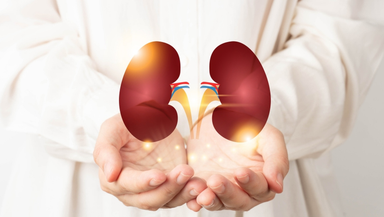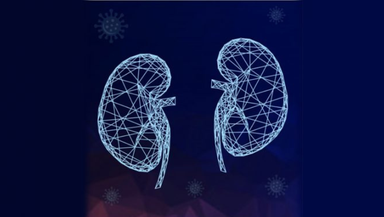Understanding Polycystic Kidney Disease: Symptoms, Diagnosis, and Prognosis

Introduction:
Polycystic Kidney Disease (PKD) is an inherited disorder characterized by the formation of fluid-filled cysts in the kidneys, leading to progressive kidney damage and dysfunction over time. PKD is one of the most common genetic kidney disorders, affecting millions of people worldwide. Understanding the causes, symptoms, diagnosis, treatment options, and management strategies for PKD is crucial for patients and their families as they confront this chronic and potentially debilitating condition.
Signs and Symptoms of Polycystic Kidney Disease:
Recognizing the signs and symptoms of PKD is essential for early detection and intervention. While symptoms may vary depending on the type and progression of the disease, common indicators of PKD include:
- Abdominal Pain: Persistent or recurrent pain in the abdomen, sides, or lower back may occur as cysts enlarge and exert pressure on surrounding tissues.
- Hypertension (High Blood Pressure): PKD can lead to hypertension due to alterations in kidney function and the renin-angiotensin-aldosterone system, which regulates blood pressure.
- Hematuria (Blood in Urine): The presence of blood in the urine may occur as cysts rupture or bleed, leading to hematuria.
- Increased Abdominal Size: Enlargement of the abdomen, often due to the growth of multiple cysts in the kidneys, may be noticeable in some individuals with PKD.
- Urinary Tract Infections (UTIs): Recurrent UTIs may occur as a result of cysts obstructing the urinary tract or predisposing to bacterial colonization.
Diagnosis and Evaluation:
Diagnosing PKD involves a combination of medical history assessment, physical examination, imaging studies, and genetic testing. Early detection and accurate diagnosis are crucial for initiating appropriate treatment and implementing strategies to slow the progression of the disease.
- Medical History and Physical Examination: Healthcare providers evaluate the patient's medical history, symptoms, and family history of PKD. A thorough physical examination may reveal signs suggestive of kidney enlargement or abdominal masses.
- Imaging Studies: Imaging tests such as ultrasound, CT scan, or MRI are used to visualize the kidneys and detect the presence of cysts. These imaging studies help assess the size, number, and location of cysts and evaluate for complications such as cyst hemorrhage or infection.
- Genetic Testing: Genetic testing may be recommended for individuals with a family history of PKD or suspected autosomal dominant PKD (ADPKD). Genetic testing can confirm the presence of specific gene mutations associated with PKD and aid in genetic counseling and family planning.
Treatment Options for Polycystic Kidney Disease:
Treatment approaches for PKD focus on managing symptoms, slowing the progression of kidney damage, and preventing complications associated with the disease. While there is no cure for PKD, various treatment modalities can help improve quality of life and prolong kidney function.
- Blood Pressure Management: Controlling hypertension is essential for slowing the progression of kidney disease and reducing the risk of cardiovascular complications. Medications such as angiotensin-converting enzyme (ACE) inhibitors or angiotensin II receptor blockers (ARBs) may be prescribed to lower blood pressure and protect kidney function.
- Pain Management: Over-the-counter or prescription medications may be used to alleviate abdominal or back pain associated with PKD. In some cases, cyst aspiration or sclerotherapy may be performed to drain and shrink large or symptomatic cysts.
- Management of Complications: Treatment of complications such as urinary tract infections, kidney stones, cyst hemorrhage, or cyst infections may be necessary to prevent further kidney damage and alleviate symptoms.
- Dietary Modifications: Adopting a healthy diet low in sodium and protein can help manage hypertension and reduce the risk of fluid retention and kidney damage. Monitoring fluid intake and avoiding excessive caffeine and alcohol consumption may also be beneficial.
- Regular Monitoring and Surveillance: Regular follow-up visits with healthcare providers are essential for monitoring kidney function, assessing disease progression, and implementing appropriate management strategies. Routine imaging studies and laboratory tests may be conducted to evaluate cyst growth and kidney function over time.
Dr Rajiv, Consultant Nephrologist, emphasizes, "Early recognition and comprehensive management of Polycystic Kidney Disease are crucial to optimize patient outcomes and quality of life. By understanding the signs and symptoms of PKD and collaborating with healthcare providers, patients can receive the necessary support and interventions to manage their condition effectively."
Conclusion:
Polycystic Kidney Disease is a chronic and progressive disorder that requires ongoing management and surveillance. By recognizing the signs and symptoms of PKD, undergoing appropriate diagnostic testing, and exploring available treatment modalities, patients can take proactive steps to manage their condition and enhance their overall well-being. Collaboration between patients, healthcare providers, and multidisciplinary care teams is essential in delivering personalized, effective care for individuals with PKD. With advancements in medical research and treatment options, there is hope for improved outcomes and a better quality of life for patients living with Polycystic Kidney Disease.
Specialities
Clear allMeet the doctor

Dr Rajiv E N
Nephrology
MBBS, MD (Gen Medicine), DM (Nephrology)











